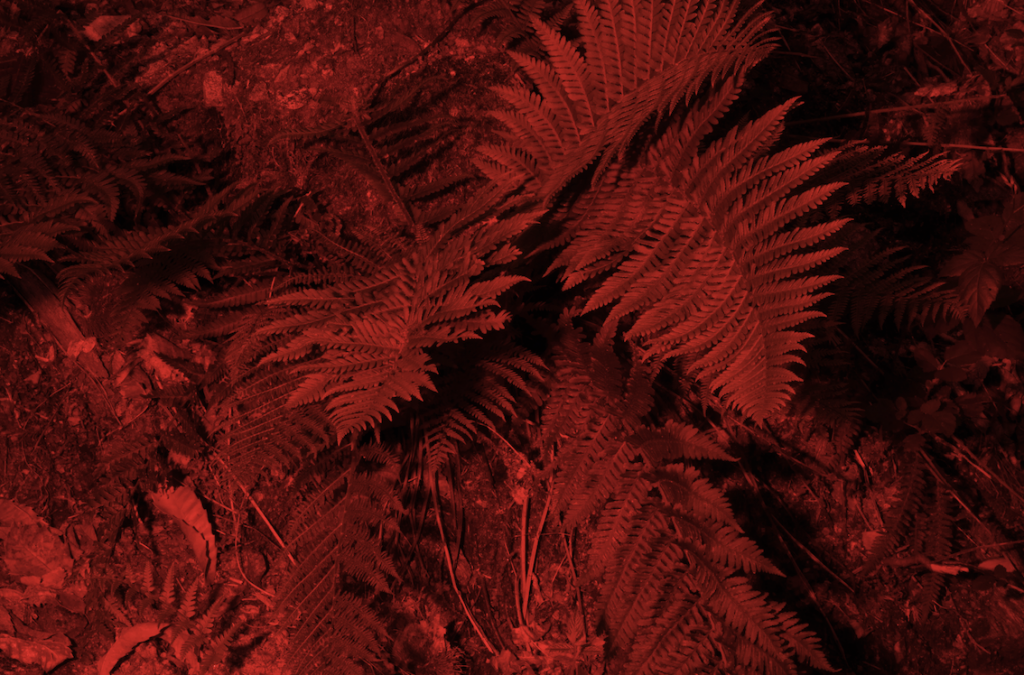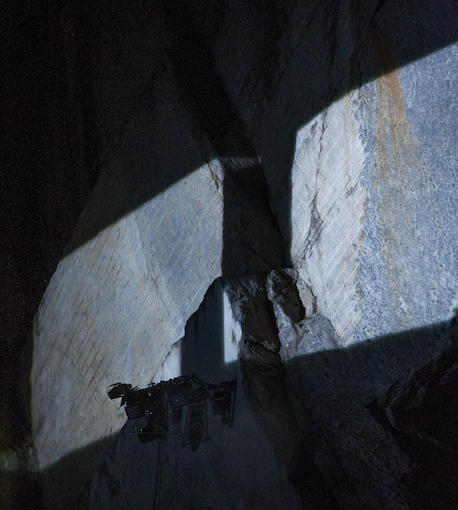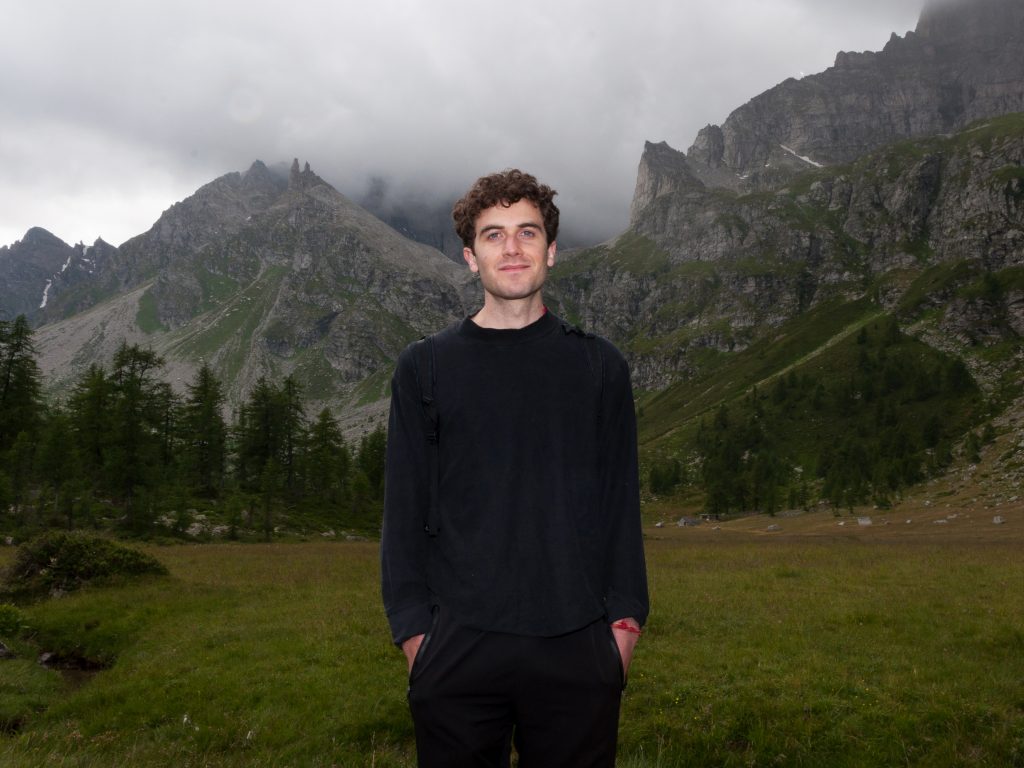Since early February, festival organizers have been attempted to overcome prohibitive public health precarity through developing new event models. Ticketed live streams, drive-in concerts, and even full-fledged productions in games like Minecraft or IMVU emulate a festival-like experience. When the first lockdown stifled Italian agency focusing on cultural sustainability Threes’ summer plans for Nextones, their yearly collaboration with Tones on The Stones, lead Nicola Giuliani saw an opportunity to undertake a different approach: a small festival with 30 attendees in the country’s Northern rural valleys.

Staged in Baveno’s quarries on July 19-26 2020 at the height of a collapsed festival economy, Before and After reflects the interrelationship between art, nature, and event gatherings outside conventional models. While the festival’s format remained one of the last viable models, under Giuliani’s direction, the organizers facilitated a variety of conversations to be had on location, including topics of event infrastructure and sustainability. The program included urban planning academic Elisa Cristiana Cattaneo, designer Riccardo Blumer, and DJs Nicolas Jaar , Lena Willikens, and Vladimir Ivkovic. I spoke with Giuliani over email to learn more about the community and its value in a post-pandemic future.
**Before and After was a small-scale event hybrid of two main productions. Did you bring elements of those events into this one? How was it curated differently?
Nicola Giuliani: Before and After is an original format resulting from a collective work. The idea shaped during the lockdown. The event was structured as an answer to collective priorities. Starting with the creation of a small temporary community, in a moment in which we are drenched in “social distancing”, to then investigate new relationships between man and nature, having the opportunity to inhabit a dismissed quarry in the mountains of the Ossola Valley. Therefore, we’ve decided to craft a program according to our intents and to the vision of the two festivals Tones on the Stones and Nextones.
**Traditional music festivals are notorious for the amount of waste they produce. Part of your series and curation responds to this problem. Can you talk about this?

NG: Sustainability is definitely one of the organization’s focuses. Actions such as the reduction of consumption, recycling and reuse are at the core of our team’s modus operandi. This year we also obtained an international certification for sustainability, ISO 20121, which defines the requirements for a sustainable event management cycle. I also think that festivals are exceptional opportunities for community and shared experimentation. Through the curatorship, one can question and investigate alternatives on issues such as the consumerist approach of natural resources and the dichotomy between domestic and natural environment.
**I also see another level to this sustainable model you’re pursuing: one that examines the role of events within larger economies of attention, information, and entertainment. Can you go into this?
NG: As mentioned earlier, I believe that festivals are places to experiment, communicate and question ourselves about important issues such as sustainability. Furthermore, festivals are a unique opportunity to address temporary communities, which present interesting features of homogeneity/inhomogeneity reverberating within virtual spaces and media. Setting up a festival is not just about its organisation but always more about structuring a coherent conceptual approach that unravels over time and is articulated in communication-oriented actions, activities, and projects, all merging in the festival itself.
**Remote event models fascinate me because they operate outside the spectacle of commercial or even metropolitan festival circuits. Regardless of a pandemic, there’s more room for discourse and conversation rather than branded sponsorships.

NG: Indeed. There is always more space, not only physically, to explore time in different ways. The mountain context of Before and After‘s compels you to have a very particular approach: straightforward, direct, simple. This approach resonates within the whole public program. It is the beginning of a “dialogue” between context, audience and curator. I find it very fascinating.
**Tell me about the community of 30 attendees and how that played a role in the festival’s proceedings. Were you looking for a more critically engaged audience?
NG: We tried to create a small community with both locals and people coming from other areas, each one with a different background. Our aim was to create an exchange which had the hosting space at its core and which would allow us to develop ideas – as different as possible from those we already had – on the imaginary future of that place.
The feedback has been incredible. It was a success both from a human point of view and in terms of inspiration.
**How does the event interact with its site’s history and community in Baveno in terms of its design and concept?
NG: There is definitely a continuity with Baveno’s past relationship with the local community and municipality. Tones on the Stones has been organizing an appendix of its festival in Baveno since a long time. This year it was fundamental to be present as a testimony of our resilience and of the community that welcomed us.

**There’s also the aspect of discourse taking place in the ruins and the serene. How is this part of Before and After?
NG: The spaces of the village of Ghesc, to which you refer, are places that contain much of the magic of the Ossola Valley. We have been collaborating for two years now with the Canova Association, which is slowly restoring the village following the approach of the “borgo laboratorio”, an open and hybrid place where you can live, experiment and work together. Initially we imagined our small community of 30 workshop participants to live there. I believe that the core of the whole approach which led to the genesis of Before&After is in those ruins and serene.
**Last question, what approach do you think event producers should take when considering remote sites for a festival?
NG: Recently I visited Chen Zhen’s Short-Circuits exhibition at Pirelli HangarBicocca in Milan. In his works he theorizes the concept of trans-experience which is based on three principles, two of which I consider very important to answer your question. The residency, which manifests itself in the relationship with a new place, and the resonance, i.e. the ability to fully relate to this new condition. These are the fundamental prerequisites to imagine something which is respectful, unique and unrepeatable.**













